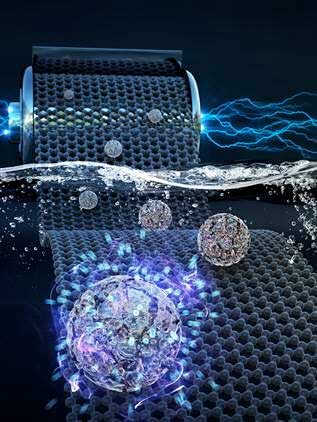Nano-supernatant capacitor (structure and function) PhD in nano-microelectronics
Researcher and author: Dr. ( Afshin Rashid)
Note: The nano-filament capacitor can pass both current and energy storage. To make this string, copper wire and plastic nanoscale layers have been used. Until now, cables and wires were used to store electricity. But a light copper nanowire can store energy in addition to conducting electricity.
A nanostructure is used for guidance and storage. Such a wire can be used to store current inside CNT single-layer nanotubes. Copper nanowires are a nanoscale sheath. And this pod combines with a special alloy and finally forms an electrode. Supercapacitors also need another electrode for storage. They do this by placing a thin layer of plastic on the surface of the pod and covering it with another metal . A special gel is also used to connect these layers. Due to the presence of insulating nanofilms, in supercapacitors, the inner wire can act as a current transmitter and the external electrode can be stored independently . In this case, a supercapacitor is made of copper Which can pass both current and storage. Thomas believes that such a supercapacitor can be produced with other materials. Energy storage and electrical conductivity of nanotube cables can be as high as that of metal wires. Among the various compounds used in supercapacitors, graphene-based materials, especially three- dimensional graphene, facilitate electrolyte penetration due to their unique three-dimensional structure. And increase energy storage. Also, high electrical conductivity and large surface area are among the other advantages of this type of three-dimensional porous structures, which have found potential potential for use in nano-supercapacitors.
One way to optimize the properties of energy storage systems is to develop new materials for use as electrode material in nano supercapacitors. Carbon materials such as graphene, carbon nanotubes, graphite, carbon nanofiber, etc. due to good electrical conductivity, cheap and availability, good biocompatibility and chemical stability play an important role in nano supercapacitors, one of the newest of which Graphene carbon structures are three-dimensional, which due to the unique three-dimensional structure facilitates the penetration of electrolytes and has a large surface area and high electrical conductivity.
Conclusion:
Nano supercapacitors are also very similar to capacitors in terms of structure and mechanism (at the nano scale), with the difference that the surface area of the electrodes is larger due to the large porosity in the supercapacitor , which leads to increased energy storage capacity in the supercapacitor . Compared to ordinary capacitors. The energy density of nano-supercapacitors is much higher than conventional dielectric capacitors .
Researcher and author: Dr. ( Afshin Rashid)
PhD in Nano-Microelectronics




